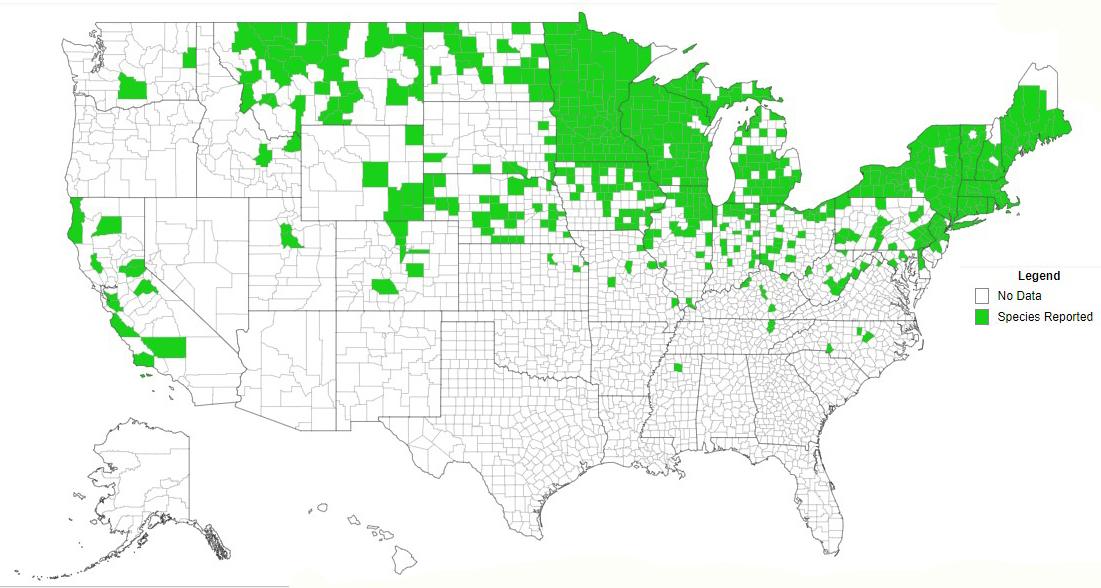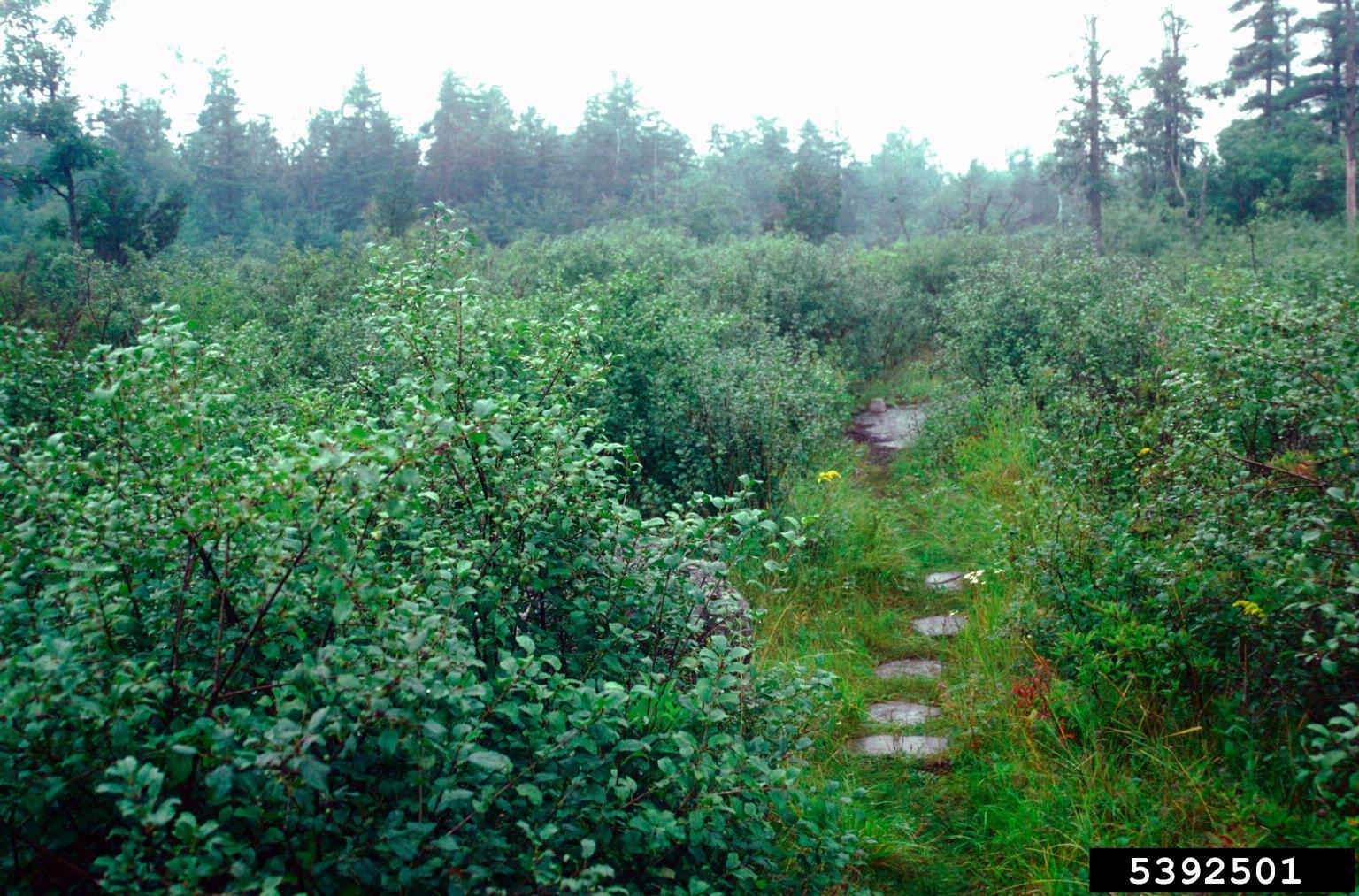European buckthorn, as the name suggests, is a native of Europe. And as is the case with many non-native species that are now considered invasive, it was introduced here as an ornamental plant, perhaps as early as the late 1700s. In the 1900s, it was planted widely to form living fence rows and for wildlife habitat. Since then, it has spread aggressively into a variety of environments. The plant’s current infestation is concentrated throughout the northeast and the upper Midwest states.
It is less well known in Maryland than some of the other invasive plants species that we’ve highlighted in this feature. Currently, it is only found in Montgomery and Baltimore counties. However, neighboring states have more widespread instances. It’s reported in two of Delaware’s three counties, in several West Virginia counties along the Appalachian Mountains, and throughout southeastern Pennsylvania. See the distribution map below.

What is it?
European buckthorn (Rhamnus cathartica) is also called Common buckthorn, Hart’s thorn, or European waythorn. It is a multi-stemmed shrub or occasionally a single stemmed tree that can grow up to 25 feet tall. The name “buckthorn” comes from terminal spines found at the end of its twigs. This perennial plant can tolerate a wide variety of soil types, from well-drained sand to clay. It is found in lightly-shaded areas, but can tolerate full shade. It often invades upland areas, such as wooded margins, areas where trees have fallen, and open oak woodlands. In some states, it has invaded grasslands, lake and stream edges, as well as disturbed sites such as urban landscapes and roadsides.
How does it spread?
This invasive plant spreads widely through seed dispersal. Its flowers appear during late spring (May-June), and its berries ripen during August and September. The berries may stay attached to the plant throughout the winter. These berries are consumed by birds and small mammals and have an laxative effect, leading to the rapid excretion of the seeds inside the berries. Berries that remain fall directly beneath the plant, contributing to a dense concentration of seedlings beneath the parent. The seeds can stay viable in the soil for up to five years. European buckthorn also spreads through stump sprouting.
How can I identify it?
European buckthorn has small, oval-shaped leaves with small, serrated teeth. They may be opposite or alternating on the same stem. The leaves are dull or dark green with a lighter underside. The flowers are small and yellowish, appear in clusters along the stem or in the spaces between the stem and the leaf. Berries are small (5-6 mm) and range from dark purple to black. The plant also has a distinctive yellow sapwood. See the image gallery below.
How can I control it?
European buckthorn seedlings that are less than three feet tall can usually be pulled by hand. Larger plants can be removed with a tool called a weed wrench, as long as care is taken to minimize soil disturbance to reduce the chance of re-sprouting or of additional infestation from other invasive plants. It can also be controlled with foliar, stem injection, basal bark, and cut-stem applications of herbicides.
For more information:
Learn more about European buckthorn:
Invasive Plants in Pennsylvania: Common Buckthorn - PA Dept. of Conservation & Natural Resources
Common or European Buckthorn—Minnesota Dept. of Agriculture
Common Buckthorn—New York Invasive Species Information
